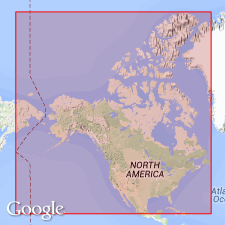
- Usage in publication:
-
- Arline formation
- Modifications:
-
- Original reference
- Dominant lithology:
-
- Limestone
- AAPG geologic province:
-
- Appalachian basin
Summary:
Pg. 41-43, chart 1 (facing p. 130). Arline formation. Mostly cobbly weathering impure limestone containing considerable quantities of fine clastic material. Weathers to yellow-brown soil containing numerous silicified fossils. Thickness about 400 feet. Underlies Red Knobs formation (new); overlies Lenoir formation. Thin remnant underlies Effna calcarenites and reefs at Porterfield quarry, Virginia. Includes Fetzer tongue (new), which is recognized in Virginia, Tennessee, and Georgia. Interfingers with silty calcareous beds of Athens formation in southeastern Tennessee and with Rich Valley formation (new) at Marion, Virginia, and vicinity. Fingers of Arline appear in Tellico formation in belt along west front of Great Smoky Mountains. Occurs in area for which Porterfield stage is named. Name attributed to B.N. Cooper and G.A. Cooper. Age is Middle Ordovician (Mohawkian).
Exposed almost in its entirety on both sides of valley of small stream tributary to Gallagher Creek, 2 mi southwest of railroad switch at Arline on Concord (TVA 138-SW) and Louisville (TVA 138-SE) quadrangles, eastern TN. Extends into northern GA and southwestern VA.
Source: US geologic names lexicon (USGS Bull. 1200, p. 135).
For more information, please contact Nancy Stamm, Geologic Names Committee Secretary.
Asterisk (*) indicates published by U.S. Geological Survey authors.
"No current usage" (†) implies that a name has been abandoned or has fallen into disuse. Former usage and, if known, replacement name given in parentheses ( ).
Slash (/) indicates name conflicts with nomenclatural guidelines (CSN, 1933; ACSN, 1961, 1970; NACSN, 1983, 2005, 2021). May be explained within brackets ([ ]).

